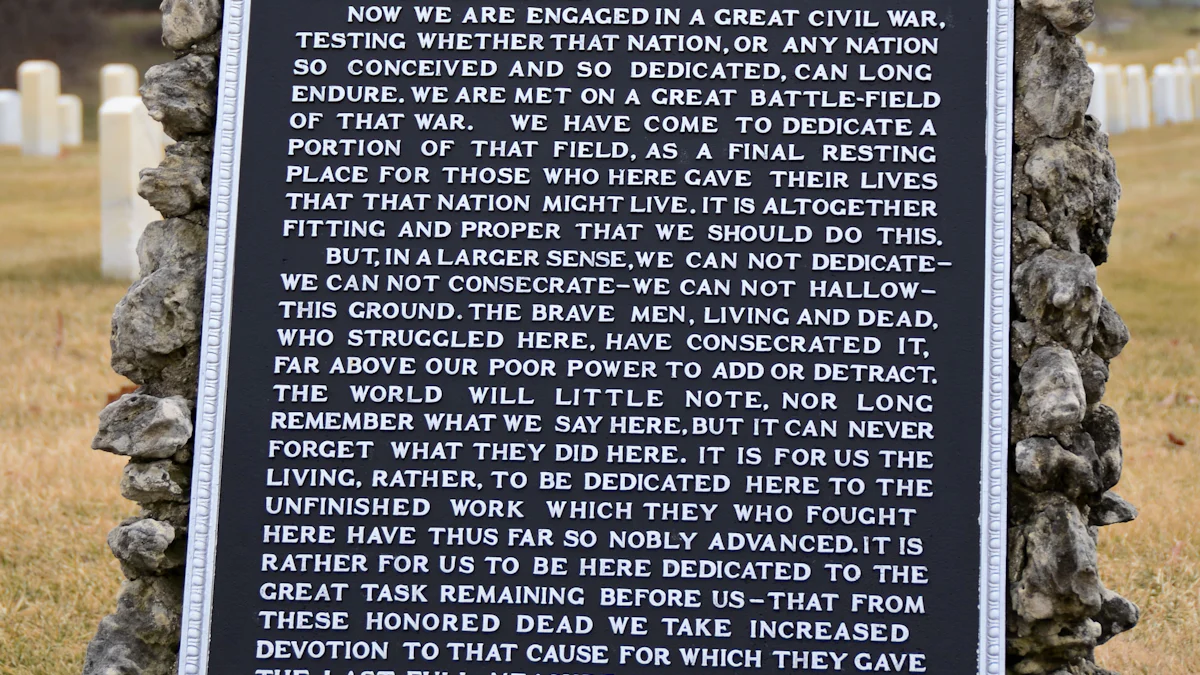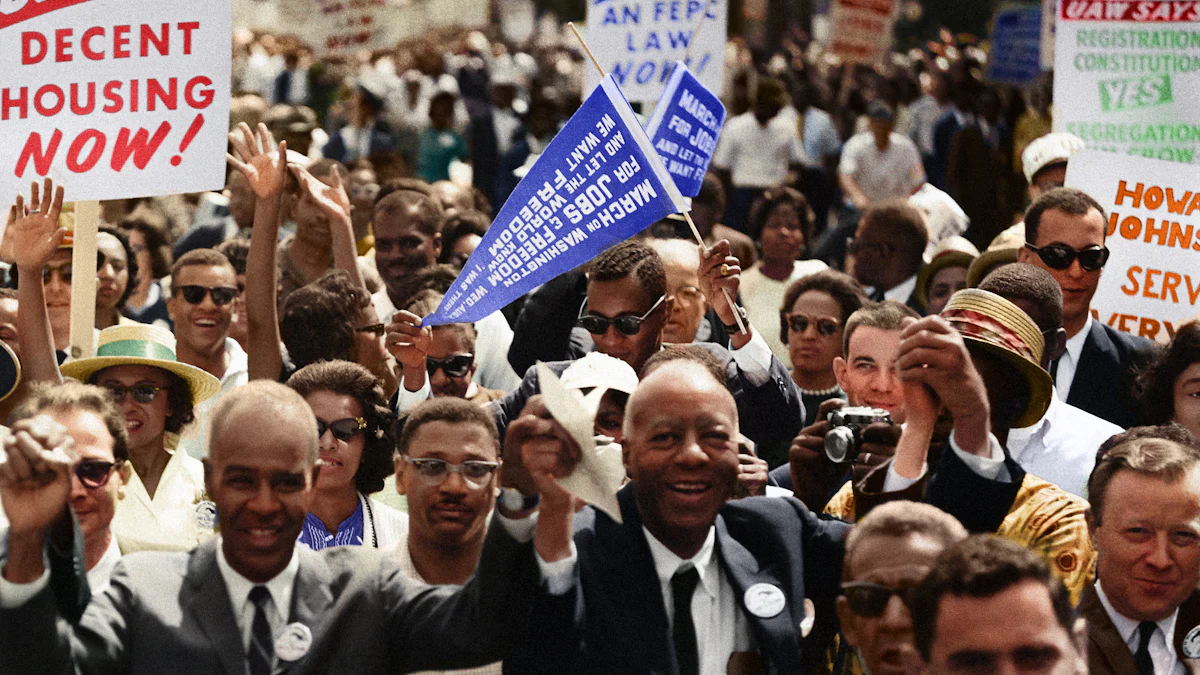The Presidents Visual Encyclopedia

A visual encyclopedia provides a unique opportunity to delve into the rich history of America. By exploring the U.S. Presidents, one gains insights into the nation's past and its evolution. Each President played a crucial role in shaping America through significant decisions and events. The collaboration with the Smithsonian Institution enhances the educational value of this resource, making it an essential tool for learning about the Presidents and their impact on history.
The Early Presidents
George Washington
Early Life and Career
George Washington was born in 1732 in Virginia. His early years involved managing his family's plantation and learning the trade of surveying. Washington gained military experience during the French and Indian War. This experience laid the foundation for his future leadership roles.
Presidency and Key Achievements
Washington became the first President of America in 1789. He established many protocols for the new government. Washington signed the Judiciary Act, which established the federal court system. His leadership helped stabilize the young nation.
Legacy and Impact
Washington's legacy includes setting the precedent for a two-term presidency. His farewell address warned against political parties and foreign alliances. Washington's impact on America's history remains profound.
John Adams
Early Life and Career
John Adams was born in 1735 in Massachusetts. Adams studied law and became a prominent attorney. His advocacy for independence made him a key figure in the American Revolution.
Presidency and Key Achievements
Adams served as the second President of America starting in 1797. He played a crucial role in avoiding war with France through diplomacy. The Alien and Sedition Acts marked his presidency.
Legacy and Impact
Adams' legacy includes his commitment to peace and justice. His efforts in establishing the Navy strengthened national defense. Adams' contributions to America's history continue to be recognized.
The Civil War Era

Abraham Lincoln
Early Life and Career
Abraham Lincoln was born in 1809 in Kentucky. His family moved to Indiana, where he grew up in a log cabin. Lincoln worked on the family farm and educated himself by reading. He later moved to Illinois and began his career as a lawyer.
Presidency and Key Achievements
Lincoln became the 16th President of America in 1861. He led the nation during the Civil War, a conflict that changed the course of American history. Lincoln issued the Emancipation Proclamation, which declared freedom for enslaved people in Confederate states. This decision marked a turning point in the fight for equality.
Legacy and Impact
Lincoln's leadership preserved the Union and ended slavery in America. His famous Gettysburg Address emphasized liberty and democracy. Lincoln's legacy continues to inspire future generations.
Andrew Johnson
Early Life and Career
Andrew Johnson was born in 1808 in North Carolina. He grew up in poverty and worked as an apprentice tailor. Johnson taught himself to read and write, eventually entering politics in Tennessee.
Presidency and Key Achievements
Johnson became President after Lincoln's assassination in 1865. He faced the challenge of rebuilding the nation after the Civil War. Johnson implemented policies for Reconstruction, aiming to restore Southern states to the Union.
Legacy and Impact
Johnson's presidency was marked by conflict with Congress over Reconstruction policies. His efforts to unify the nation faced significant challenges. Johnson's impact on America's history remains a subject of debate among historians.
The Modern Presidents
Franklin D. Roosevelt
Early Life and Career
Franklin D. Roosevelt was born in 1882 in New York. Roosevelt grew up in a wealthy family and attended prestigious schools. His education at Harvard University and Columbia Law School prepared him for a career in politics. Roosevelt served as a New York State Senator and later as Assistant Secretary of the Navy.
Presidency and Key Achievements
Roosevelt became the 32nd President of America in 1933. He led the country during the Great Depression and World War II. Roosevelt introduced the New Deal, a series of programs aimed at economic recovery. These efforts provided relief to millions of Americans and reformed the financial system.
Legacy and Impact
Roosevelt's leadership transformed America’s role in global affairs. His policies laid the foundation for modern social welfare programs. Roosevelt's presidency set a precedent for strong executive leadership during crises.
John F. Kennedy
Early Life and Career
John F. Kennedy was born in 1917 in Massachusetts. Kennedy came from a prominent political family and attended Harvard University. His service in the Navy during World War II earned him recognition. Kennedy's political career began in the House of Representatives, followed by the Senate.
Presidency and Key Achievements
Kennedy became the 35th President of America in 1961. He faced challenges such as the Cuban Missile Crisis, which tested his diplomatic skills. Kennedy promoted civil rights and initiated the space race, aiming to land a man on the moon.
Legacy and Impact
Kennedy's vision inspired a generation to pursue public service. His commitment to civil rights advanced the movement for equality. Kennedy's presidency remains a symbol of hope and progress in American history.
Notable First Ladies
Eleanor Roosevelt
Early Life and Influence
Eleanor Roosevelt was born in 1884 in New York City. Her family held a prominent position in society. Eleanor faced personal challenges during her childhood. These experiences shaped her compassionate nature. Eleanor's education at Allenswood Academy in London broadened her worldview. Her marriage to Franklin D. Roosevelt connected her to American politics. Eleanor's early life laid the foundation for her future influence.
Contributions as First Lady
Eleanor Roosevelt transformed the role of First Lady. She used her position to advocate for human rights. Eleanor held press conferences and wrote a daily newspaper column. Her efforts focused on social justice and equality. Eleanor supported the New Deal programs initiated by Franklin D. Roosevelt. Her work extended beyond traditional First Lady duties. Eleanor's contributions left a lasting impact on America.
Jacqueline Kennedy
Early Life and Influence
Jacqueline Kennedy was born in 1929 in Southampton, New York. Her family valued education and culture. Jacqueline attended Vassar College and studied abroad in Paris. Her love for art and literature influenced her later work. Jacqueline married John F. Kennedy in 1953. Her background prepared her for a public life in history and politics.
Contributions as First Lady
Jacqueline Kennedy brought elegance to the White House. Her focus on arts and culture enriched American society. Jacqueline led a restoration project for the White House. This project preserved historical artifacts and enhanced national pride. Jacqueline's televised tour of the White House captivated the nation. Her style and grace became iconic symbols. Jacqueline's contributions continue to inspire admiration.
Famous Speeches and Major Constitutional Events

Gettysburg Address
Context and Significance
The Gettysburg Address stands as a pivotal moment in America's history. Abraham Lincoln delivered this speech on November 19, 1863, during the dedication of the Soldiers' National Cemetery in Gettysburg, Pennsylvania. The Battle of Gettysburg had occurred just months earlier, marking a turning point in the Civil War. Lincoln's words aimed to honor the fallen soldiers and redefine the purpose of the war. The address emphasized the principles of liberty and equality, reminding the nation of its founding ideals.
Lincoln's speech consisted of only 272 words, yet it conveyed profound meaning. The address underscored the importance of national unity and the struggle for freedom. Lincoln's eloquence inspired future generations to uphold these values. The Gettysburg Address remains a cornerstone of American rhetoric, often studied in schools and featured in visual encyclopedias. Its enduring legacy continues to shape the understanding of democracy and sacrifice in America.
The New Deal
Context and Significance
The New Deal represents a transformative period in American history. Franklin D. Roosevelt introduced this series of programs and policies in response to the Great Depression. The economic crisis had left millions of Americans unemployed and struggling to survive. Roosevelt's New Deal aimed to provide relief, recovery, and reform to the nation.
The New Deal included initiatives such as the Social Security Act, which established a safety net for the elderly and unemployed. Programs like the Civilian Conservation Corps and the Works Progress Administration created jobs and improved infrastructure. These efforts revitalized the economy and restored public confidence. The New Deal's impact extended beyond immediate relief, laying the groundwork for modern social welfare systems.
Roosevelt's leadership during this era demonstrated the power of government intervention in times of crisis. The New Deal reshaped the relationship between the federal government and American citizens. This period remains a significant chapter in America's history, illustrating the resilience and adaptability of the nation. Visual encyclopedias often highlight the New Deal's achievements, providing valuable insights into this critical era.
Understanding presidential history provides insights into America's evolution. Each U.S. President played a pivotal role in shaping the nation. The Presidents Visual Encyclopedia offers an engaging way to explore these historical figures. Interactive elements encourage further exploration of this rich history. This visual encyclopedia serves as an educational tool for young readers. The collaboration with the Smithsonian Institution enhances its value. Children will learn about events that defined each presidency. The encyclopedia highlights the impact of presidents and first ladies on domestic and foreign policy. This resource inspires curiosity and appreciation for American history.
See Also
Visual Encyclopedia of American History
Visual History of the American Revolution
Definitive Visual History of Armored Vehicles

